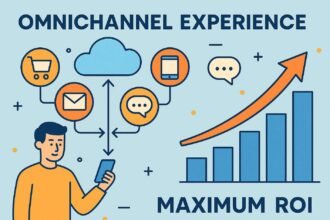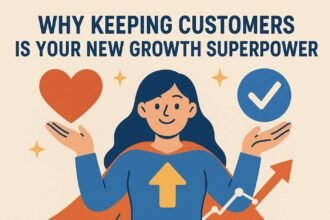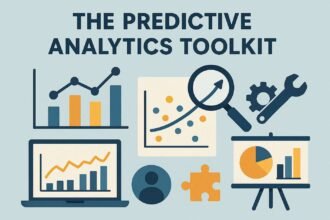Initiating Your Exploration of Social Media Marketing
With the growth of social media platforms such as Facebook, Instagram, Twitter, and LinkedIn, the focus on social media marketing has expanded considerably. These channels have become central to marketing plans for both big companies and small businesses. Marketing in the modern world involves creating online communities that connect with customers across various social media networks.
Social media marketing is a common strategy that leverages social networking sites to raise brand awareness and achieve marketing goals. Organizations that execute an effective social media marketing plan can reap numerous benefits, including heightened brand recognition, improved customer service, and increased website traffic from targeted audiences.
Definition of Social Media Marketing
Social media marketing is a form of Internet marketing that utilizes social media websites and social networks to achieve marketing communication and branding goals. Social media marketing programs can function as a communication platform, enabling companies to introduce new products, services, and programs too. Moreover, social media marketing enables companies to identify the needs and wants of customers by encouraging the customers to share their thoughts and suggestions. Potential customers are made aware of brands, products, services, and promotions, and those that become customers are encouraged to continue their purchasing relationships. Advertisements appear on social media sites, where companies pay either for effective advertising or for processing feeds that appear on members’ Internet home pages. Social media marketing also includes corporate marketing on social networks and through blogs.
Historical Context of Social Media
Social media marketing is a form of internet marketing that uses social networking websites as a marketing tool. The goal of social media marketing is to produce content that users will share with their social network to help a company increase brand exposure and broaden customer reach. With the emergence of Web 2.0 internet application technologies, social media sites allow users to share ideas, content, thoughts and relationships online. Businesses have realized they can use viral marketing through social media to their advantage, and many companies set up Facebook and Twitter pages in order to catch customers’ attention. Social media marketing extends to e-commerce businesses as well, since social media sites maintain a very high amount of traffic for businesses to generate quality leads and sales. Additionally, social media marketing is an effective way for businesses to interact with their customers and create a two-way communication system between them.
The history of social media marketing dates back to one of the first social media sites, Six Degrees. The first platform that was widely used for social media marketing based on the garnering of attention by advertisers was Facebook. Facebook was one of the first of its kind, when it was launched in 2004. It was originally launched as an online social media and social networking service. After some time, Facebook professionals recognized the need for companies and individual professionals to create presence on the platform and thus Facebook was launched for general public. The websites and the importance of all social media channels have been late-nighters, whereas Facebook,Whatsapp, and Instagram are three overnight innovations that came about in the early 2000s. These channels embarked on a global phenomenon, but the technological drivers of these channels also revolved around the technological advances occurring in the computer world at that time. The developed Internet, the widespread establishment of high-speed computers all over the country, the establishment of cloud computing, the expansion of smart mobile phone use, the introduction of communication among online social media, by means of voice and visual video, and so on, have all contributed to the innovations happening in the social media field.
Benefits of Social Media Marketing
Social media marketing has become an integral part of nearly every business’s marketing plan, often offering a wealth of benefits. It employs a variety of platforms to build brand awareness, boost sales, and engage with customers. Despite these advantages, companies may also face challenges such as potential negative backlash and rapidly changing algorithms. The benefits include increased brand awareness, more engaged customers, cost efficiency, access to a targeted audience, and improved search engine rankings.
Social media sites serve as an ideal platform to increase brand awareness. Companies can regularly post updates across platforms to reach a wider, relevant audience. When it comes to understanding customer demands and building relationships, social media marketing offers a real-time, two-way street that reduces costs and improves customer engagement. The relatively low cost of social media marketing—compared to traditional advertising—and its ability to target specific demographics allow businesses to reach a highly targeted audience. These factors combine to position social media marketing as a primary driver of company growth. By generating share-worthy content and encouraging users to comment and share, businesses can improve their SEO rankings and overall marketing performance.
Increased Brand Awareness
Social media marketing can increase brand awareness by providing a relevant platform for communications and advertising. The ability to create customized business pages on social media platforms allows marketers to optimize the pages and profiles to include branded usernames, custom profile images, golden ratios for banner images, titles, and URLs. Increased brand awareness can be measured by the number of followers on a company’s account, the number of mentions or tagged posts, and the associated conversion rate.
Brand awareness not only raises the profile of a brand but generates increased word-of-mouth advertising. Increasing customers’ engagement with the brand enables customers to illustrate their appreciation of the brand through branded merchandise and create interactive conversations with the company that can feature customer feedback or questions. Response rates should be monitored to determine maintenance of customer engagement and to help marketers identify the times when customers are more responsive. Companies should also measure the impact that brand awareness has on its brand image, as the two can fluctuate independently.
Enhanced Customer Engagement
Customer engagement is essential to keeping a brand at the forefront of people’s minds. It relates to every interaction that a contributor makes on any platform where the brand maintains a presence. For instance, responding to a comment, describing a photo in a hashtag, or liking a customer’s comments can all influence perceptions of the company.
Customers appreciate this kind of interaction, too, especially when it enables them to resolve an issue easily or even just express how much they like a company’s products. They also value companies that respond collectively to critical events in the news, with a sympathetic or positive message appropriate to the situation.
Cost-Effective Marketing
Compared to other advertising strategies such as television, radio, and print media, social media marketing is more accessible, flexible, and economical. In fact, about 77% of marketers find it easier to achieve their marketing goals when using social media strategies. It is also remarkably cost-effective: more than 70% of marketers label social media as a cost-efficient platform. This approach permits businesses of all sizes to promote their products and services efficiently. With the availability of digital tools, even low-budget campaigns can reach millions of target consumers.
Despite its low cost, social media marketing offers impressive engagement rates. For instance, email marketing usually has lower open rates than Facebook and Instagram posts. Moreover, large corporations and small enterprises alike can utilize social media marketing to create brand awareness and boost sales. A well-structured social media marketing campaign positively affects a company’s visibility and profitability. Exploiting analytics in platforms such as Facebook, Instagram, and Google allows businesses to precisely identify the right audiences and connect with them at minimal costs.
Access to Targeted Audiences
Targeted marketing defines activities aimed at attracting the attention and loyalty of a particular consumer group rather than the market at large. In contrast, mass marketing ignores the subtle facets of human behaviour, tending to treat much of the population as a ―coherent, homogeneous group‖. The ability to reach the most desirable audience and establish focused, engaging communication presents a primary attraction of social media, with UberMedia having developed a highly sophisticated, location-specific product that exploits footprints gathered through client smartphones. The emerging trend for audiences to create content (―crowdsourcing‖ and ―co-creation‖) also enables firms to ensure that their messages are relevant and resonate with the people they want to reach.
Improved SEO Rankings
Search engines such as Google take into consideration your social media presence when ranking their search results. An active social media account signals to Google that your business is worthwhile, which improves the chances of your website appearing at the top of the results page. Social media can also increase the number of inbound links pointing to your website. Backlinks are not only important for SEO but also help drive referral traffic. Sharing newsworthy posts on LinkedIn and Twitter is a great way to gain additional exposure and enhanced search rankings.
Popularity is important in social media marketing. By sharing high-quality and relevant content multiple times each week, you increase the chances of receiving “likes” or “shares” from your audience. This can help you develop brand loyalty and improve SEO. However, it can be difficult to decide which campaigns to invest your time and money in. Monitoring the success of all your marketing efforts is essential to making strategic decisions and keeping within budget. Key Performance Indicators (KPIs) can be used to measure performance and help you determine your future marketing spend.
Key Strategies for Effective Social Media Marketing
Social media marketing is a business technique that uses social media to reach customers. It involves activities such as creating and sharing content, running ads, and interacting with customers. The main aim is to connect with customers and build a good relationship with them. The benefits of social media marketing include: 1. Increasing recognition of the brand, 2. Interacting with customers, 3. Minimising advertising costs, 4. Reaching the target audience, and 5. Enhancing website ranking.
To achieve these benefits, businesses can use a combination of strategies such as customer engagement, creating brand awareness, paid social advertising, influencer marketing, content creation, and analytics. Social media marketing is conducted on popular platforms like Facebook, Instagram, Twitter, LinkedIn, and TikTok.
Content Creation and Curation
Creating and curating content are the keystones of social media marketing. “Content is king” remains a valid cliché as useful, original, educative, inspiring or entertaining content engages existing followers and tempts new ones to discover the brand. Launching a new collection, showing behind-the-scenes images, inviting followers to share content, supporting a local charity or introducing the team are good vein of ideas. However, it is important to avoid flooding audience feeds with poorly designed posts or diluted messages. Maintaining a limited scope and focusing on successes will build confidence and loyalty.
Listening to feedback, sharing followers’ content and interacting directly with industry trends will tag the brand’s voice in the social media world. Similarly, influencer marketing is attractive. However, programs are expensive, sometimes unreliable and often underperform. They may also detract attention from passion-led brand endeavors and distract from interacting with the wide and varied community. The most successful brand ambassadors emerge organically. Paid-for advertising is a positive social media practice when done well, but selecting suitable platforms, target audiences and continual optimization of reach and engagement levels requires a sophisticated knowledge, not least of the influencers. Finally, measuring, evaluating and acting on learned lessons from social media campaigns is vital to ensure continuous improvement.
Audience Engagement Techniques
High-quality content and regular interaction with audience comments and questions are crucial for building engaged social media communities. In addition, contests and polls encourage audience involvement and foster a sense of connection with fellow fans. Collaborations with social media influencers—respected figures who command large, dedicated followings—help businesses reach new market segments, amplify brand messaging, and achieve specific marketing outcomes. Influencers co-create content, endorse products or services, and lend credibility to campaigns.
Marketers also deploy paid advertisements on Facebook, Instagram, Twitter, and LinkedIn to promote branded content and attract new followers. They can target audiences based on location, demographics, interests, and behaviors, enabling precision marketing and efficient budgeting. Finally, analytics platforms track follower growth, engagement levels, click-through rates, and conversions, allowing marketing teams to assess campaign success and calibrate activities moving forward.
Utilizing Influencer Marketing
Influencer marketing, or influence marketing, is a strategy involving collaboration between a brand and an online influencer to increase brand awareness. Social media influencers have large audiences established through content they have created, on platforms such as YouTube or Instagram. When working with an influencer, a brand provides items for the influencer to create content around, and may also volunteer payment for additional publicity services. Influencer marketing is a strategic approach derived from word-of-mouth marketing. The rise of popularity with social media creates a large platform–place for a brand to also market to. Unlike traditional forms of advertising, influencers on social media are able to reach large demographics; it is the product placement, study, and review that draws attention to the brand. For example, a brand may sale a product to twenty social media influencers and ask them to create content back up to the brand’s product. These are often created as accounts or blogs that are dedicated to product reviews. The use of influencer marketing is a large part offensive and defensive. Brand owners see the large potential in the influencer marketing advertising path, especially due to the free publicity that often happens through blogger reviews.” Another positive aspect of social media influencer marketing is the potential to reach times consumers based on gender, family status, income, etc.
However, with the high brain–of mind-space of influencer marketing, there are also a number of drawbacks and limitations associated. Just as people view forms of advertised media to convey a presentation or physical attribute for a product, they are very interested in how truthfully representative influencers are of the product being representatax. In the past year, the Federal Trade Commission (F.T.C.) has been investigating and enacting new guidelines and laws for true representational payments, support, and influencial feedback of the product descend. The use of Word of Mouth has a very baby–influential way of appealing to the publics emotions. Traumatic, fears, suggestions for those in their married, new born–family phase has been wrapped around this path. But when I come here they told me that if you had any for the lasers…”
Key Benefits of Social Media Marketing Social media marketing offers many benefits to businesses, including: Increased brand awareness When a business creates quality content and shares it on social media, it gains exposure. If the content performs well, it might be shared or rebuffered, allowing the business to reach even more people. These people may then become customers.” Instagram [and] TikTok can enhance brand awareness and engagement by offering brands an unexpected combination of entertaining, inspiring, connected, and even experimental” content that resonates with users’ personal aspirations and decision-making. Increased customer engagement Social media provides businesses with a direct line to their customers. Customers can comment, ask questions, and share insights about products or services, which allows the business to respond promptly. Timely engagement often makes customers feel valued. Cost-effectiveness Social media marketing is inexpensive when compared to traditional or other digital marketing channels. Aside from the time and effort involved, businesses only need to invest money when paying for highly targeted advertising. Access to ideal customers Social media platforms have sophisticated targeting features that allow businesses to reach their most likely customers with razor-sharp precision. For instance, new parents in North Dakota who own dogs can be targeted with relevant ads.” Increases SEO rankings Social media marketing increases the number of inbound links to a website, which, in turn, improves website rankings in the three biggest search engines — Google, Yahoo!, and Bing. Inbound links are connections from another website to a business’s own website.
Paid Advertising Options
Paid advertising on social media platforms can offer additional support to your content marketing or community building efforts. Many social networks also offer services that help you advertise beyond their platforms. A crucial aspect for any business or marketer is selecting the most suitable social media platform for paid advertising. In addition to Facebook, Instagram, Twitter, and LinkedIn, TikTok ranks among the most popular paid advertising platforms and has recently garnered significant attention. Your choice should align with your social media marketing goals, the nature of your content, and your target audience.
Promoted Tweets on Twitter, Instagram and Facebook Ads, and LinkedIn Advanced Targeting are among the most effective paid options currently available. Paid social media marketing services allow businesses to reach audiences who have yet to hear of their company, product, or service. These individuals might be among the most challenging to engage because they typically don’t readily click on links, open emails, or respond to broadcasts. Furthermore, employing paid advertising can dramatically increase exposure to highly targeted groups in your niche.
Analytics and Performance Tracking
Social media is a highly dynamic environment, with engagement numbers continuously fluctuating throughout the year. Consequently, businesses must maintain an active presence on these platforms, regularly posting content to capitalize on opportunities during peak periods. How can one determine the optimal times to publish content? The answer lies in social media analytics tools, which monitor results on each network and identify posting times that historically yield maximum views and engagement.
Social media analytics tools provide critical insights for marketers. The metrics they generate answer questions about the most engaging content, times of maximum engagement, audience demographics such as gender and age, and geographic locations. By leveraging these insights, marketers can gain a comprehensive understanding of their followers and tailor their content accordingly. Popular tools like Facebook Insights and Instagram Insights, integrated into their respective platforms at no cost, facilitate this kind of analysis.
Popular Social Media Platforms
Most businesses use these six platforms: Facebook, Instagram, Twitter, LinkedIn, Pinterest, and TikTok. The target audience should influence platform choice. Pinterest is popular with women, LinkedIn targets other professionals, for example. All are good for increasing brand awareness and promoting new products or services. For brand awareness, Facebook and Instagram tend to have the best reach with visual content. Facebook and Twitter are better for interacting with customers, clients, and patients. The latter is well suited for news and current events.
Each platform has unique features: Facebook remains popular, now hosting local groups, social events, and buy/sell exchanges. Instagram, owned by Facebook, appeals to younger people who are attracted to lifestyle or tourist imagery; many creators, artists, photographers, and fashion brands maintain Instagram accounts. Businesses use it to share videos and reels, and also employ Instagram Shops to advertise and sell products. TikTok, the newest platform, emphasizes short, entertaining videos; it is popular with younger demographics and often considered a potential replacement for Instagram. LinkedIn is more formal; professionals use it to network and connect with potential employers and employees, with companies marketing themselves through personal or corporate posts and job advertisements.
Leading the pack of social platforms, Facebook was the first to reach one billion users. Its mixed audience of business professionals, moms, and teenagers makes it a robust marketing channel. With a wide variety of ad formats and targeting options, Facebook is suitable for brands that want to reach a diverse audience. Facebook is excellent for creating customized conversations in the form of posts, events, and groups. The platform’s powerful advertising tools enable targeted campaigns. Facebook’s advertising workbench with highly specified targeting options allows marketers to aerial bombard the users of Facebook with advertisements that interest them the most. The visual multimedia format enhances the impact of the advertising campaigns. Facebook Pages empower the audience to become the voice of brands via sharing brand-friendly content with their network. Facebook is also a useful platform to measure brand awareness.
Instagram is a visual-centric platform that emphasizes photos and short-form videos. With 2 billion monthly active users (including 500 million Stories users), it is one of the most popular social media platforms. Its visually pleasing interface makes it ideal for brands in travel, food, fashion, art, and design niches, providing unique opportunities to build brand image and awareness.
Creating and sharing content on Instagram is particularly important. Engaging content that resonates with followers can captivate and captivate prospective followers, hence increasing followers. Hashtag discovery enables targeting of specific audience segments, while partnerships with Instagram influencers extend reach. Additionally, Instagram’s paid promotion tools can be leveraged for brand awareness and directing website traffic.
Twitter is an online news and social networking service where users post and interact with messages known as “tweets”. Tweets were originally restricted to 140 characters, but doubled to 280 for non-Asian languages in November 2017. Registered users can post, like, and retweet tweets, while unregistered users can only read them. Users access Twitter through its website interface, SMS, or mobile device app. As of the second quarter of 2020, Twitter had more than 330 million monthly active users.
Twitter support agencies use it for marketing, advertising, and brand management. Unlike other social media services such as Facebook, users do not need to give their real names or other personal information. As a result, it has detected a rise in people using the platform for cyberbullying, harassment, and trolling. This vulnerability has made Twitter a popular platform for bots and online extremists. The service and its policies have also been criticized for failing to deal with the proliferation of misinformation and for allowing its platform to be used as a tool of state-sponsored propaganda.
Originally launched as a professional network in 2003, LinkedIn evolved into one of the most powerful social media platforms dedicated to building professional networks. The website has grown exponentially, becoming a platform that professionals use daily. LinkedIn now hosts more than 650 million users in over 200 different countries, making it ideal for expanding a brand’s reach. With its 100 billion monthly feed updates, LinkedIn offers businesses a vast platform to promote products and services to a professional audience.
While LinkedIn can be used like Facebook and Instagram, what truly sets it apart is its ability to place specific content in front of the right audience. Unlike the business-to-consumer (B2C) model, many companies operate under a business-to-business (B2B) model. LinkedIn’s advanced filters allow businesses to target job title, company name, seniority, and other variables, ensuring content is displayed to the most appropriate audience and optimizing advertising budgets.
TikTok
TikTok focuses on creating and sharing short-form videos. Users spend significantly more time on TikTok compared with other social media networks, with its addictive algorithm tailor-made for short and funny videos that make users scroll endlessly. TikTok is suitable for brands whose target audience is Gen Z: The most consumed content from this generation has been entertainment, so TikTok plays in Dao’s favor with its benefits.
By optimizing the marketing funnel so that the entertaining content also leads users to the conversion phase, it is possible to turn them into customers or clients efficiently. For example, during the COVID-19 pandemic, a major supermarket in Portugal created entertaining TikTok content aligning with the marketing funnel, which worked surprisingly well. Compared with traditional influencer campaigns, this strategy was 50–90% cheaper while still effectively carrying the client message.
Challenges in Social Media Marketing
With the numerous benefits of social media marketing, it is tempting to believe that simply creating a profile on each platform and regularly posting is enough to reach marketing goals. However, social media marketing possesses some potential downsides and challenges that companies must consider prior to investing time, money, and effort into it.
The changing algorithms of the various platforms frequently impact organic reach for businesses, making it imperative to be aware of these changes when crafting a marketing strategy. Additionally, the appearance of negative comments on profiles requires careful and timely monitoring to ensure quick response and efficient handling. Social media marketing, particularly for businesses that have not yet built large audiences, necessitates considerable investment in creating highly engaging content. Lastly, the market is saturated with content, resulting in a high volume of posts competing for the attention of users. This oversaturation forces companies to delve deeper into social media marketing to surpass competitors and entice users to engage more, as well as prompting platforms to tweak algorithms to enhance the user experience.
Changing Algorithms
Social media platforms provide marketers with ample opportunities to promote their businesses. However, there are many difficulties that may be faced. One such challenge is the changes in social media algorithms. Social platforms regularly change their algorithms to address new marketing concerns, collaboration results, and user reactions.
One example of such concern is the quick communication or dissemination of harmful content about public figures or governments. In response to this concern, the Instagram algorithm was adjusted in 2021 to prioritize posts, reels, or videos from friends and family and currently favors quality posts. The algorithm continues to be improved to reduce hate speech, misleading information, and harmful comments. When algorithms are updated, reaching the filtered market becomes more expensive.
Negative Feedback Management
Managing negative feedback can be irritating and mentally exhausting, especially when employing social media marketing methods. However, important principles can help resolve negative feedback smoothly to minimize the damage caused. Jeannine van Schie suggests not deleting negative responses because this provokes backlash from the unhappy commentator and others who send a message that the negative response is unfair and untrue. Instead, encourage unhappy commentators to talk through the incident in detail, listening carefully and responding politely and directly, even if the comments are unfair or untrue, recommending “a real conversation, if you can”. Negative feedback should never be handled by dodging the issue or deleting discontenting criticism, as this damages reputation more than the original complaint.
Understanding the reason behind the negative commentary is crucial for either resolving the issue or, for inflammatory online comments, for ignoring them. Sometimes negative comments are nothing more than trolls wishing to troll, and it is acceptable to ignore such critics. Trolls merely seek to upset people, with no concern about helping anyone. Typical examples of negative feedback include: “You played a scam on me and tried to cheat me.”; “Business bad.”; “Really liked the way you outraged your customers.”; and “You lost a very big customer- me!”. Recognizing the nature of accusations is important; they may be direct, vague, or not serious but still unpleasant and damaging. Addressing negative feedback appropriately helps to improve social media performance and protects the business from further injury.
Content Saturation
Content creation is time-consuming. Many organizations experience difficulty developing clear and efficient editorial calendars for a constant flow of quality original content. For instance, adding images or video to social media posts is generally perceived to improve engagement, however many companies are often challenged to keep up with these growing demands.
Social platforms are overcrowded with competing content from diverse business, entertainment, news, and social sources. This fragmentation makes it difficult for social media posts to make a lasting impression in the minds of the users. It has been the prevailing gamble that content that appears towards the beginning of the cycle receives the greatest number of views, likes, and shares before other newer posts or videos are shared. With new technologies the range of content creation has never been wider, from basic twitter feed text to sophisticated video advertisements actively marketed side-by-side with organic media content.
Future Trends in Social Media Marketing

From mobile marketing to voice and visual search, smart speakers, and chatbots, artificial intelligence (AI) continues to empower marketers to be more targeted in promoting their products and services through social media. Marketers can now utilize the data social media platforms collect on consumers to create AI-generated ads which resonate with consumers’ preferences and motivate them to take action. Recommender systems also now analyze each user’s unique characteristics to provide them with personalized products and services on the social media platform of their choice.
AI applications have increased consumer expectations about what they can achieve through social media. For example, chatbots allow consumers to ask for a product and instantly receive a response about pricing and delivery estimates. The use of augmented and virtual reality technologies has brought consumers one step closer to product combinations and experiences, helping them make decisions in products and services. Marketers can use these technologies to showcase products and services and enhance the user experience of browsing dark stores. Influencer content is perceived to be more authentic and trusted than traditional content, and social commerce transaction methods such as Buy Now buttons on social media enable consumers to complete transactions efficiently.
Emerging Technologies
Social media marketing is poised to undergo significant transformations driven by emerging technologies such as augmented reality (AR), virtual reality (VR), artificial intelligence (AI), and machine learning. Facebook’s rebranding as Meta and its launch of the metaverse ambition illustrate a broader push to revolutionize the social marketing experience. Through integrated AR filters, Facebook enables Instagram users to seamlessly merge physical elements with virtual AR objects, while on TikTok, AR can be leveraged to integrate virtual product placements directly into videos. Exciting new applications of AR, VR, and AI will soon allow brands to offer immersive virtual environments for product exploration. Specialized goggles will facilitate viewing and interaction within virtual spaces, at times blurring the lines between reality and imagination.
AI-powered tools are rapidly evolving to meet future content marketing demands for social media. They can automate complex manual tasks, freeing up creative teams to focus on strategic initiatives. Enhanced data analysis capabilities will enable brands to identify and capitalize on minute market opportunities before competitors. AI technologies promise to deliver more applicable content recommendations to users, while powered chatbots are becoming the preferred choice for real-time social media customer service. Voice search functionality is also expected to grow in relevance, introducing yet another dimension to social marketing strategies(s).
Shift in Consumer Behavior
Social media marketing is the use of social media platforms and websites to promote a product or service. Although dating back to 2000, it has gained significant popularity in recent years, reaching into billions of daily users, particularly heightened in response to pandemic conditions. The practice has increased brand awareness, broadened the customer base, and enhanced the flow of immediate and genuine consumer feedback. Social media marketing is also among the most profitable methods of advertising, ranking below Pay Per Click search engine marketing and search engine optimization.
Social media platforms are popular among consumers, particularly the younger demographics; hence advertising on these channels exposes the brand to large groups, potentially increasing sales and expanding market influence. Similarly, an effective social media marketing campaign improves a brand’s position in search engine rankings. Maintaining an enthralling and engaging social media presence, allowing customers to comment and disclose their experiences with a company, is vital, especially as consumer purchasing decisions often hinge on other customers’ comments and revelations. However, companies must consider potential risks associated with social media marketing, including negative feedback, hostile comments, and changes in social media platform algorithms that can impact advertising revenue.
Increased Focus on Privacy
Governments and privacy organizations aim to protect consumers’ personal data through regulations and guidelines. General Data Protection Regulation (GDPR), California’s Consumer Privacy Act (CCPA), and China’s Cybersecurity Law are the most well-known regulations. Social media marketing refers to the incorporated use of social network services and social media platforms for marketing activities. The interplay between emerging technologies and consumers’ uptake of social media platforms through mobile devices affects social media marketing. Social networking sites have implemented a variety of privacy controls and options in social media marketing. These enable social network users to manage the way in which they participate and engage in social media marketing: controlling access to social content, protecting social content from theft and misuse, and safely using social marketing activities.
Case Studies of Successful Social Media Campaigns
Brands, organizations, and companies that establish an affordable and efficient connection with existing markets that have previously used traditional marketing strategies have announced that they meet their goals when targeting a new customer market with different needs and tastes along with their existing ones. To establish this communication, which emerges one way or allows interaction with customers through two-way communication, the importance of using social media as a communication channel is emphasized by all companies. Despite obstacles such as the seasonal features of the marketing sector, the rapidly changing social media platform usage behaviors of customers, and algorithm changes in social media platforms, companies continue investing on many platforms to develop brand awareness, using as many promotional channels as possible and driven by the strong motivation of successful social media marketing campaigns.
Analyzing successful social media marketing campaigns is very important for organizations and helps consideration of the related sector throughout the whole world. It shows the platforms where customers’ attention can be directed and the customers to be reached. Moreover, it reveals what kind of content can attract customers’ attention and create interaction with customers. The achievements of many companies described here illustrate that social media marketing campaigns support brand development, increase brand awareness, improve reputation, help to reach new potential customer markets, and increase sales figures. These important benefits indicate that social media marketing campaigns meet the expectations of companies and organizations alike.
Measuring Success in Social Media Marketing
Measuring success in social media marketing entails evaluating KPIs and ROI metrics to determine campaign effectiveness, linking outcomes to strategic goals and benefits. Success measurement is an essential part of social media marketing, which is the use of social media platforms and websites to promote a product or service.
Popular social media platforms for marketing include Facebook, Instagram, Twitter, LinkedIn, and TikTok, each possessing unique characteristics that influence marketing strategies. Social media marketing offers many potential benefits, such as increased brand awareness, customer engagement, cost efficiency, access to targeted audiences, and improved search engine rankings. Effective social media marketing requires the use of key strategies like content creation, audience interaction, influencer partnerships, paid promotions, and analytics. In recent years, the field has also faced challenges from algorithm changes, negative feedback, and content saturation. Future trends associated with social media marketing encompass emerging technologies, evolving consumer behavior, and privacy concerns.
Key Performance Indicators (KPIs)
Evaluating the effectiveness of social media marketing campaigns entails consideration of various key performance indicators (KPIs). Awareness-level metrics including reach, impression, and fan growth rate assess the magnification of a company’s message. Engagement rate evaluates communication quality and recipient responsiveness. Conversion rate and sentiment score elucidate the achievement of commercial goals. Operational-level measurements such as financial values ascertained by return on investment (ROI) gauge the monetary outcome of social media marketing efforts.
Such indicators afford insights into program success relative to the vision, mission, and goal of the organization. Furthermore, they can point to areas requiring adjustments or improvements. Differences in product types, company sizes, and marketing objectives cause variation in metric selection and prioritization.
Return on Investment (ROI)
In keeping with section 10.1. Key Performance Indicators (KPIs), many of the same points apply directly. The analysis of social media marketing (SMM) effectiveness and the calculation of return on investment (ROI) first require consistently collected data. Some popular metrics can be categorized as KPIs for SMM, which include reach, traffic, engagement, conversion rates, and follower growth. The selection of appropriate KPIs depends on the initial business goals and desired outcomes. Ultimately, meaningful data measurement must encompass both revenue and costs to enable the determination of ROI.
The benefits identified in previous sections help explain why companies invest in social media marketing. Although the underlying principle is straightforward, practical implementation encounters significant challenges. These include the ever-changing social media environment, as well as the combined effects of customer complaints, poorly planned campaigns, and increasing content saturation. In this context, advanced data analysis becomes essential and is closely linked to marketing automation. The use of specialized tools addresses aspects such as campaign scheduling, community management, sentiment analysis, and the provision of the most current performance statistics and return on investment calculations.
Conclusion
Social media marketing is the process of creating and sharing content on social media networks in order to achieve marketing and branding goals. Social media marketing includes activities like posting text and image updates, videos, and other content that drives audience engagement, as well as paid social media advertising.
Social media marketing provides numerous benefits; it can increase brand recognition and customer loyalty, drive users to a company’s website, enable direct interactions with customers and prospects, and build valuable long-term relationships. It is also one of the most cost-efficient ways to promote products and services because companies can create and share custom-tailored brand messages with their targeted audience. Additionally, social media marketing helps companies rank higher in search engines by improving backlink quality and emphasizing social signals.












